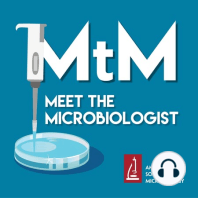24 min listen

085: Using DNA technologies to answer epidemiological questions with Jennifer Gardy
085: Using DNA technologies to answer epidemiological questions with Jennifer Gardy
ratings:
Length:
44 minutes
Released:
Jun 21, 2018
Format:
Podcast episode
Description
Jennifer Gardy talks about whole-genome sequencing as a technique to address public health issues using genomic epidemiology. She talks about her research on TB and new DNA sequencing technologies, including her vision for microbial genetic sequencing as one piece of the puzzle in the future of public health. Julie’s Biggest Takeaways: Whole-genome sequencing technologies are replacing older DNA technologies to identify relatedness between microbial isolates. The genome sequences help to identify epidemiological questions such as the origins of an outbreak. A pathogen’s genome being passed person-to-person accrues small changes, similar to children playing telephone - except those children are scattered around the room, and you have to logically deduce the order in which the information was passed. DNA sequencing has moved forward faster than the upstream genomic preparation and downstream sequence analysis areas; Gardy expects advances in these ‘bookend’ areas to be breakthroughs of the future. The Ebola and Zika outbreaks were test cases for portable DNA sequencing technologies, but informative based on the different disease presentation: Ebola patients have high viral loads and thus a lot of genomic material, but Zika patients have much lower viral loads and it was much harder to get samples. Based on pathogen characteristics, DNA sequencing can identify the end of an outbreak. Gardy used sequencing to find that patients with TB, which can take years to develop into fulminant disease, had been infected years previous, and was able to see that transmission was no longer ongoing. Featured Quotes: “Genomics is really cool because instead of interviewing people about what happened in an outbreak, we’re interviewing the pathogen!” “[Working at BCCDC] is a really nice ecosystem, where you can really see the results of your research changing public care policy and practice in real time, and that is incredibly rewarding.” “The only prediction you can make about DNA sequencing is there’s always going to be something new and different.” “Depending on your use-case, sometimes you need to go after the whole genome and other times a targeted approach is more than enough.” “I’m excited to see how this [microbial DNA sequencing] work fits in into an overall public health landscape. It’s cool to sequence genomes and make some reports about transmission networks, but that’s just one small part of a very big public health system that is trying to keep populations healthy. It requires so many different people, from nurses and doctors on the frontline to policy makers behind the scenes to social scientists who are interacting with patients or care providers to people that are understanding the economics of these things... when you start to see how these different pieces of the puzzle fit together, I think there’s a lot of opportunities in the future for making microbial genomics just one piece of a large interdisciplinary puzzle of people that are working together across different fields to address a disease from multiple different angles.” Links for This Episode: Jennifer Gardy’s website Jennifer Gardy at UBC Nanopore Minion Alan Alda Center for Communicating Science Banff Science Communications HOM Tidbit: Albrecht Kossel, a Biographical Sketch
Released:
Jun 21, 2018
Format:
Podcast episode
Titles in the series (100)
MTS6 Bruce Rittmann - Microbes, Waste and Renewable Energy by Meet the Microbiologist